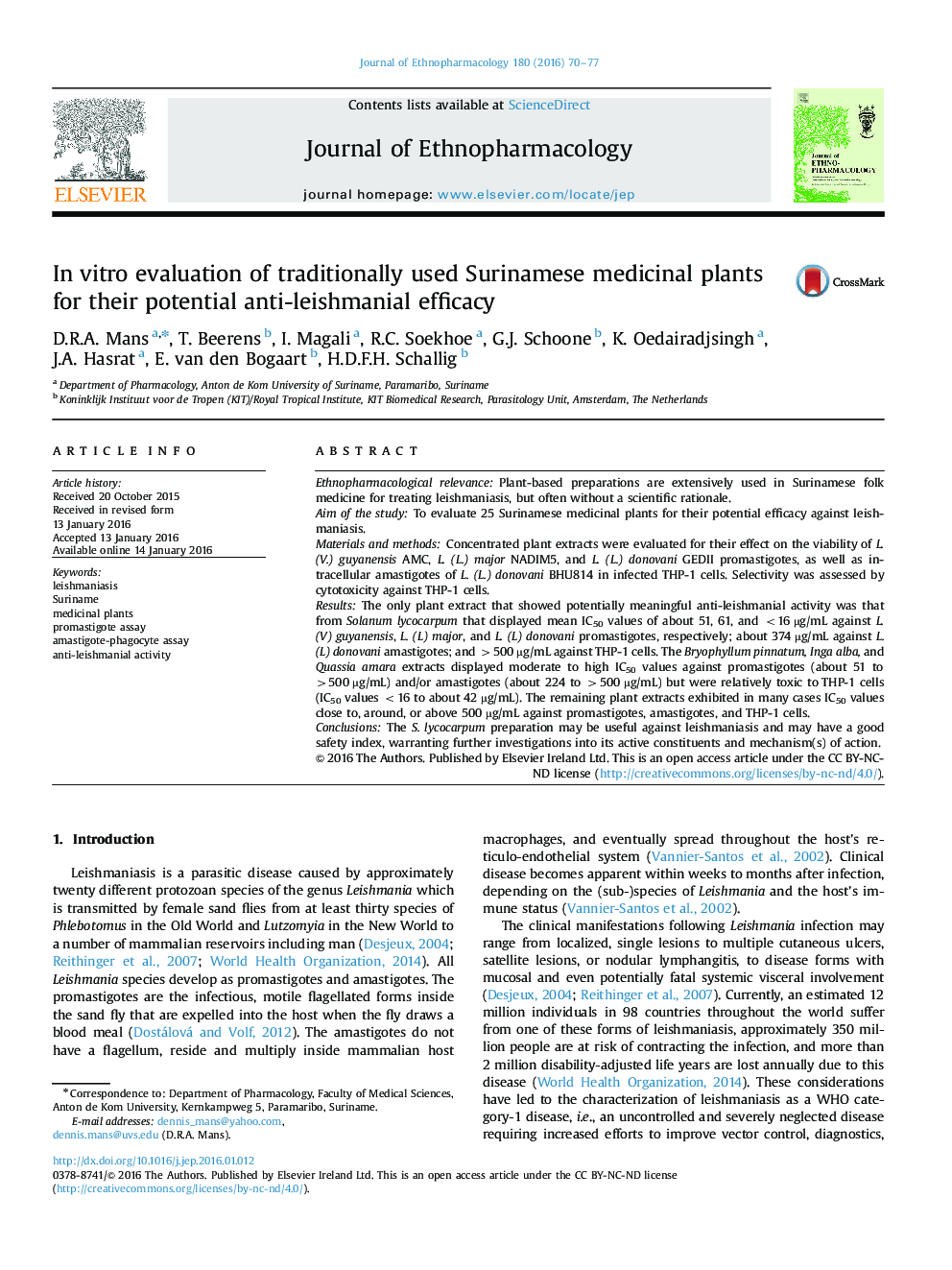| Article ID | Journal | Published Year | Pages | File Type |
|---|---|---|---|---|
| 5834662 | Journal of Ethnopharmacology | 2016 | 8 Pages |
Ethnopharmacological relevancePlant-based preparations are extensively used in Surinamese folk medicine for treating leishmaniasis, but often without a scientific rationale.Aim of the studyTo evaluate 25 Surinamese medicinal plants for their potential efficacy against leishmaniasis.Materials and methodsConcentrated plant extracts were evaluated for their effect on the viability of L. (V.) guyanensis AMC, L. (L.) major NADIM5, and L. (L.) donovani GEDII promastigotes, as well as intracellular amastigotes of L. (L.) donovani BHU814 in infected THP-1 cells. Selectivity was assessed by cytotoxicity against THP-1 cells.ResultsThe only plant extract that showed potentially meaningful anti-leishmanial activity was that from Solanum lycocarpum that displayed mean IC50 values of about 51, 61, and <16 µg/mL against L. (V) guyanensis, L. (L) major, and L. (L) donovani promastigotes, respectively; about 374 µg/mL against L. (L) donovani amastigotes; and >500 µg/mL against THP-1 cells. The Bryophyllum pinnatum, Inga alba, and Quassia amara extracts displayed moderate to high IC50 values against promastigotes (about 51 to >500 µg/mL) and/or amastigotes (about 224 to >500 µg/mL) but were relatively toxic to THP-1 cells (IC50 values <16 to about 42 µg/mL). The remaining plant extracts exhibited in many cases IC50 values close to, around, or above 500 µg/mL against promastigotes, amastigotes, and THP-1 cells.ConclusionsThe S. lycocarpum preparation may be useful against leishmaniasis and may have a good safety index, warranting further investigations into its active constituents and mechanism(s) of action.
Graphical abstractDownload high-res image (238KB)Download full-size image
